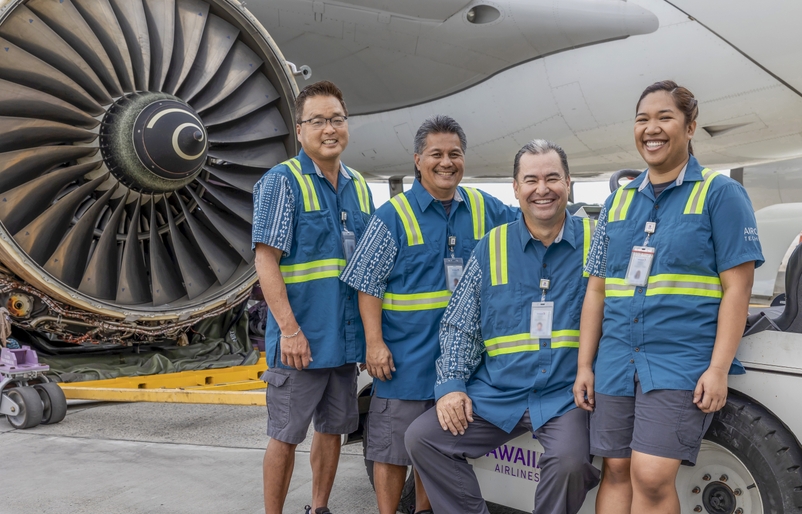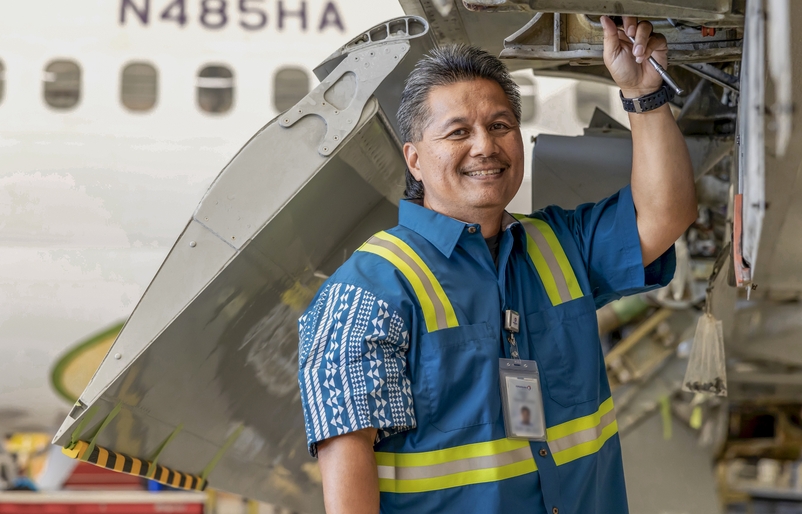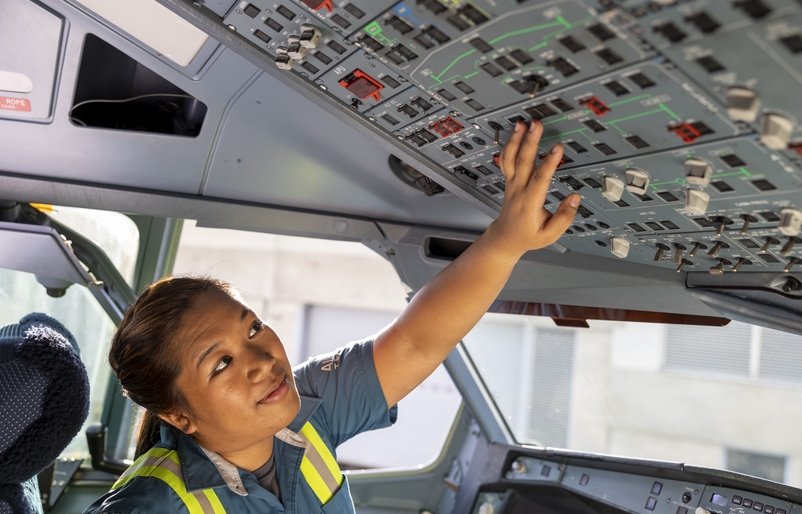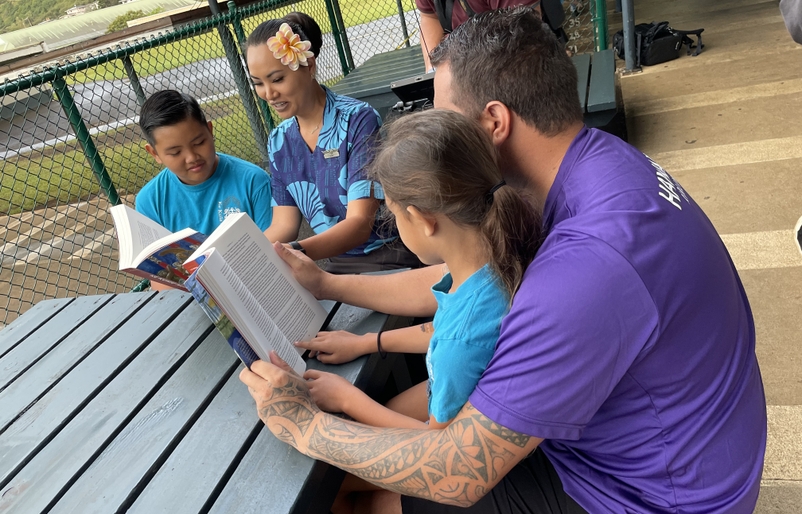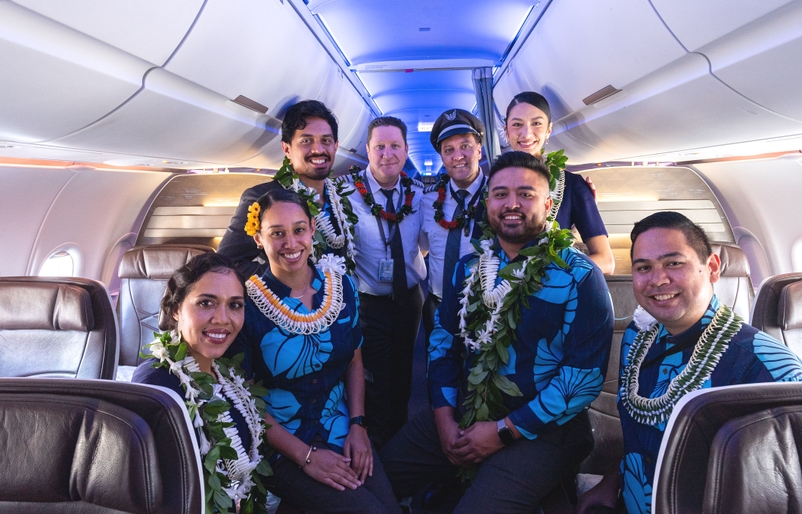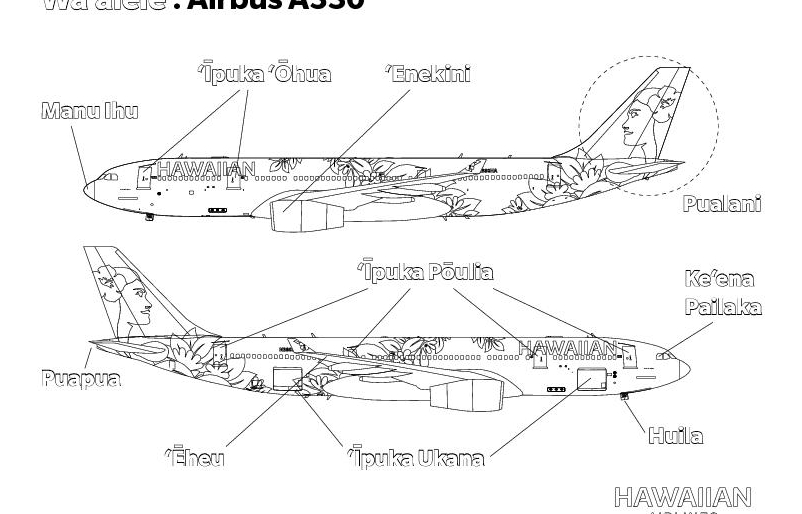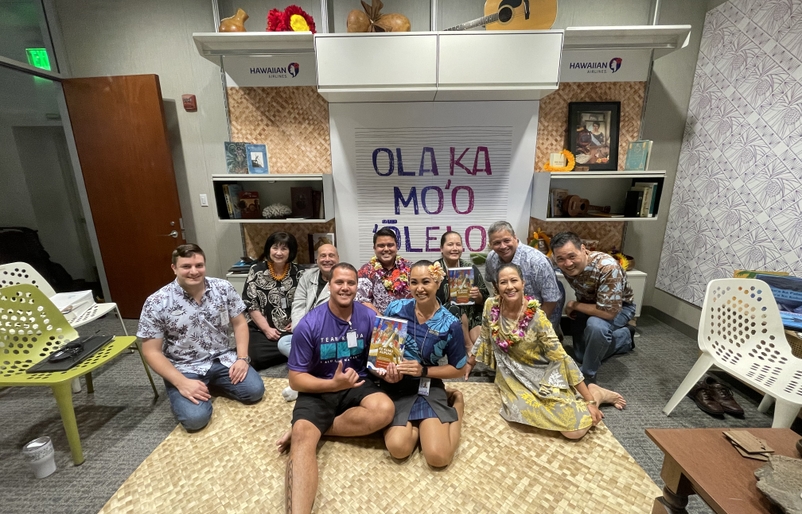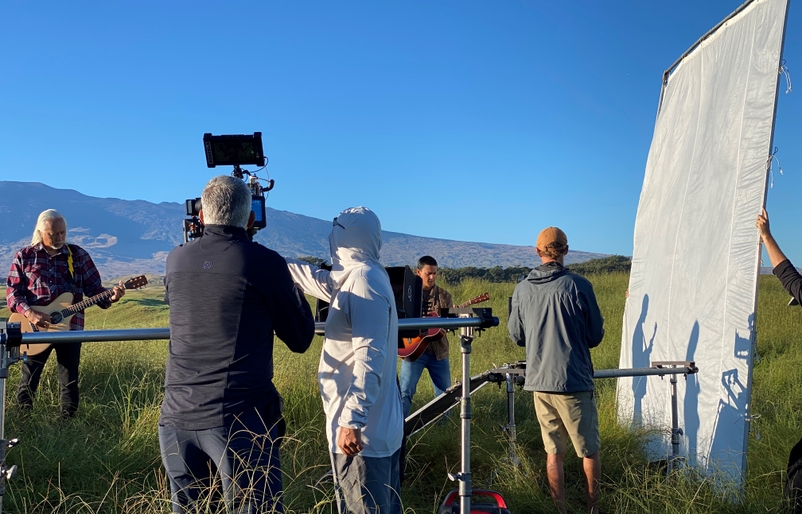Born and raised on Oʻahu’s North Shore – a stretch of rural coastline dubbed ‘the seven-mile miracle’ for its unrivaled concentration of world-class waves – Luke Shepardson, the son of an avid surfer and bodysurfer, was inevitably drawn to the ocean early on.
“You start at Haleʻiwa, learning to ride the whitewater, then bigger whitewater on the outside (break), and then real waves … Velzyland, Rocky Point, Sunset, and Waimea,” he recalls his progression in the sport, listing surf spots of increasing difficulty as if they were compulsory school grade levels. “The peer group that I was with, we were all just pushing each other, going bigger and bigger.”
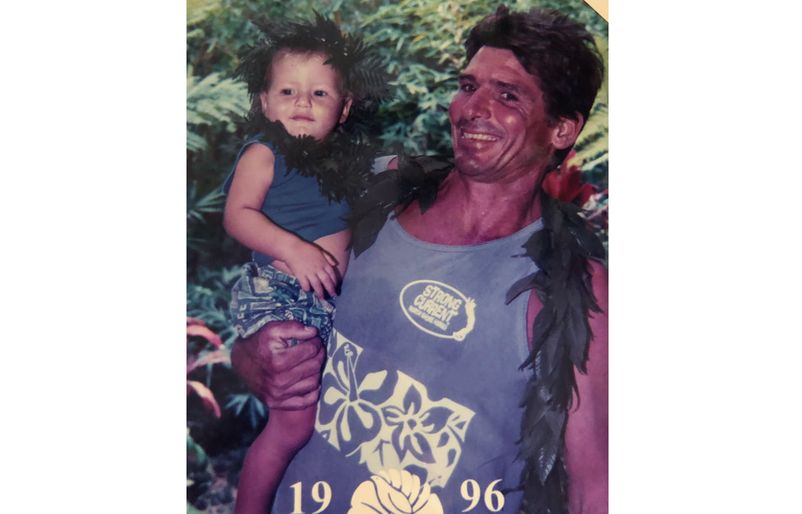
A young Luke Shepardson with his father, Mark Shepardson
Shepardson’s surfing evolved as he participated in Hawaiʻi Amateur Surfing Association events around the island with his sights on a professional career. Along the way, he earned the nickname “Casual Luke” for his mellow, easygoing – almost non-competitive – approach to riding waves of consequence. He dropped out of Kahuku High School in ninth grade (later earning a General Education Diploma) and taught surf lessons to fund his travels.
But after years of competing and even securing sponsors, Shepardson abruptly quit.
“I gave up on my dream in my early 20s – it started getting late,” Shepardson, now 27, said pragmatically. “I also had my first son and figured I’d need a solid job.”
Ironically, once Shepardson decided to hang his contest jersey, he achieved one of his best results at Sunset Beach – one of Hawaiʻi’s most iconic and powerful surf breaks.
“My son was three months old, and I made the semifinals,” Shepardson said, smiling. “Once I gave up on trying hard, I did good. But before the contest, I knew it was my last one. I tried electrician work first, for the money, but I wasn’t happy. I wasn’t by the ocean. I missed a good Pipe(line) swell and quit the next day. I got into the next lifeguard trials a few weeks later.”
Following His Passion
A lifeguard since 2019, Shepardson never stopped surfing – especially when the waves got big.
In 2016, as a massive swell headed to Waimea Bay, organizers of The Eddie Aikau Big Wave Invitational – the world’s most prestigious event of its kind – gave the greenlight to run the contest for just the ninth time since 1985. Created in honor of the late Waimea Bay lifeguard and waterman Eddie Aikau, and sponsored in part by Hawaiian Airlines since 2019, it requires waves to be consistently in the 20-feet-plus range (or 40-feet measured from the bottom to the crest of the wave) with favorable winds. Unlike traditional competitions, surfers cannot enter the Eddie by earning points at qualifier events. Instead, they must prove their ability in large surf and be selected by the Aikau family.
Shepardson was not on the coveted list, but he paddled out to the giant surf at dawn along with dozens of recreational surfers and invitees warming up for the contest. After falling on a huge wave, he was rescued, placed on a stretcher, and taken to a trauma center an hour away in Honolulu for evaluation. He was discharged and made it back to Waimea just in time to surf again after the Eddie had ended.
The following year, Shepardson was invited. He’s been welcomed back to the Eddie every year since, although the contest went on a six-year drought due to unreliable wave conditions.
That changed on Sunday, Jan. 22, when one of the largest swells to ever hit Waimea allowed the Eddie to go. Because the event is scheduled without advance notice as wave-producing storms suddenly generate in the Pacific, Shepardson was unable to request time off work, but his captain found a solution: Shepardson would be assigned to lifeguard at Waimea and use his breaks to surf his two heats.
On the eve of the Eddie, Shepardson attended a retirement party for a co-worker and went home to prepare. Surfers rely on various forecasting models to monitor big swells, but Shepardson, a resident of Pūpūkea, a community above Waimea Valley, didn’t need the data to know the waves would be enormous.
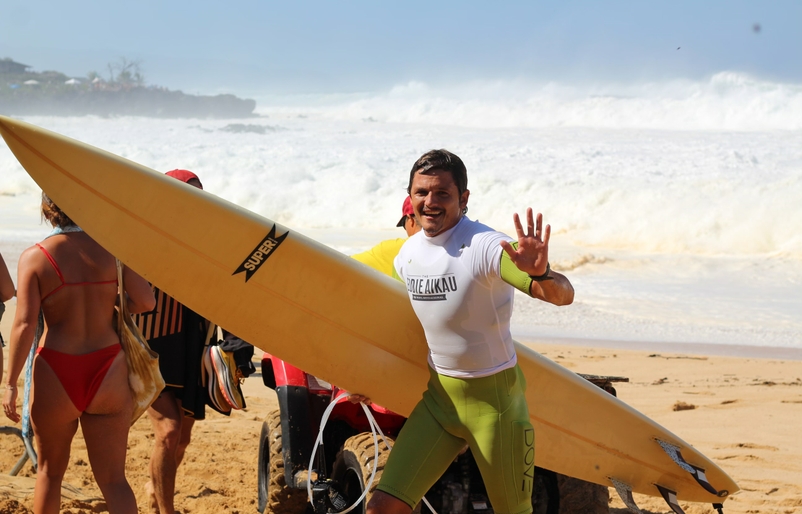
Shepardson waves to spectators after surfing a heat at the 2022-23 Eddie Aikau Big Wave Invitational
“You could hear the cracking and the thunder” of the swell building in size overnight, he recalled. “I was getting ready for bed about 10 p.m. when a buoy reading came at 23 feet, 19 seconds (reflecting the swell size and the time between each set wave). I had super gnarly butterflies. I went to bed to get ready for work. The buoy was at 27 feet, 19 seconds in the morning – the biggest I’ve ever seen for surfable conditions.”
The Eddie Goes
It is estimated that up to 40,000 people gathered at Waimea Bay to watch the 34th installment of the Eddie. On his early morning drive to Waimea, Shepardson got stuck in traffic. He asked his girlfriend to take the driver’s seat, grabbed his lifeguard fins and ran the remaining mile or so toward Waimea, where he arrived at 7 a.m. He immediately began patrolling the shore and preventing beachgoers from getting swept out to sea by the surging swell – as his fellow competitors caught practice waves in the distance.
Ironically for Shepardson, focusing on lifeguarding instead of the contest warm up was advantageous.
“I’m really glad I was working because I’m a horrible contest surfer and I get the butterflies, super anxious. I’m not myself,” he said. “I didn’t even think about the contest at all. It was work, super busy keeping everyone safe. Then OK, it’s time for my heat, I get a break from work, I get to catch a few waves and enjoy myself and be a part of this special event. It’s always been a lifelong dream of mine.”
Around 11 a.m., Shepardson walked down the steps of his lifeguard tower, waxed his 10-foot board, and paddled out for his first heat: earning a perfect 10-point ride along with an impressive nine as his backup score.
For the next several hours, Shepardson rode his ATV up and down Waimea, and even treated two competitors, Brazil’s Lucas Chianca and Kauai’s Keala Kennelly, for gashes on their leg and chin, respectively. Several spectators had to be rescued from the Waimea rivermouth as it got overwhelmed by the waves.
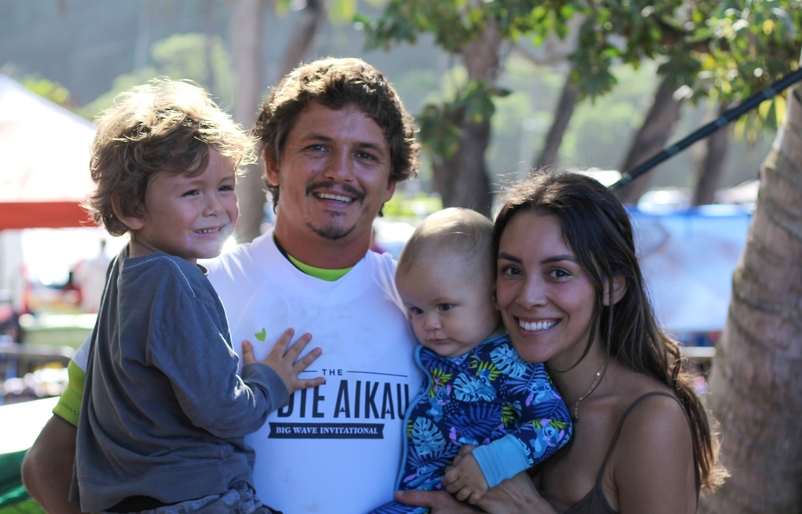
Shepardson with sons Haven (on left) and Wild, and girlfriend Natalia Macias
In the late afternoon, as Shepardson prepared for his second heat and the day’s last, Clyde Aikau, the younger brother of Eddie Aikau, offered him some advice.
“He came to me and said, ‘You need one really good wave and you win,’” Shepardson said. “I tried to brush it off because I’m not the best pressure person. I was telling myself if it (the right wave) comes to me, it’s meant to happen, but I’m not going to send myself over the ledge to get a 9.5 and get hurt, because I got to finish the day at work.
“Before my heat started there was a huge closeout set,” Shepardson continued. “Everyone got over it. I was getting into position, and a beautiful wave came straight to me. I committed and just went. At one point, I thought ‘Should I jump?’ but I got the drop, and there was a nice explosion (of whitewater) behind me. That felt really good. One of my best waves ever. I claimed it and cartwheeled (wiped out) instantly.”
Shepardson would later ride another wave, this time successfully exiting it just as it folded into a mountain of whitewater wrapping across the entire bay.
“I had a feeling I had a chance. I came in and changed into my work clothes,” he said, “then I got called to the podium.”
As Clyde Aikau announced the results starting from eighth place, Shepardson was the last surfer standing. He had won the Eddie Aikau, edging out runner-up finisher John Florence, the 2016 event winner and a two-time World Surf League champion, in a field stacked with the best big wave riders.
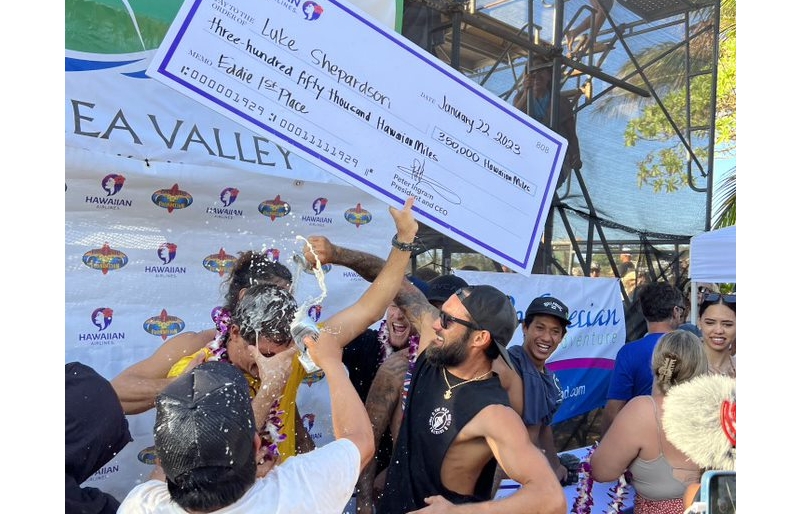
Shepardson is overcome with emotion after winning the 2022-23 Eddie Aikau Big Wave Invitational
“I just started crying. The amount of emotions that went through my body, it was crazy,” he said. After a brief celebration, Shepardson returned to his tower.
“I stayed there to back up my partners,” he said. “Everybody (all the lifeguards) in the water did really well, the beach stayed mostly under control. We stayed there until 7 o'clock, everyone stayed safe. It was a good day.”
Shepardson, whose sons are one and four years old, says his life has been “turned upside down” with dozens of media interviews and events. Honolulu’s mayor surprised him at his tower and declared Jan. 25 as Luke Shepardson Day. Later this month he will be recognized with a prestigious “Meritorious Act Award” by the United States Lifesaving Association Board of Directors.
Asked how he plans to use the 350,000 HawaiianMiles he won, Shepardson intends to take his children to visit their grandparents in California, followed by a trip to Tahiti, Japan, or Fiji.
On being forever associated with Eddie Aikau and his legacy, Shepardson reflected, “He set the bar so high – to have a perfect record of over 500 saves and no lives lost under his watch…. That’s unexplainable.
“I’ll try my best to follow in his footsteps,” he added. “It’s really cool to be a lifeguard and share the passion for lifeguarding and love for big waves. He is an idol of mine and someone I look up to. I’ll never be as good as him but it’s cool to strive for something like that.”

Shepardson teaching his son Haven the ropes while tandem surfing at Pua'ena Point on Oahu's North Shore
In addition to being the exclusive airline sponsor of the Eddie Aikau Big Wave Invitational, Hawaiian Airlines is also proud to be a longstanding sponsor of the Eddie Aikau Foundation’s Eddie Would Go Essay Contest, which helps spread Eddie’s story of courage and compassion in saving lives, and his dedication to the Hawaiian people and Hawaiʻi’s culture.






































